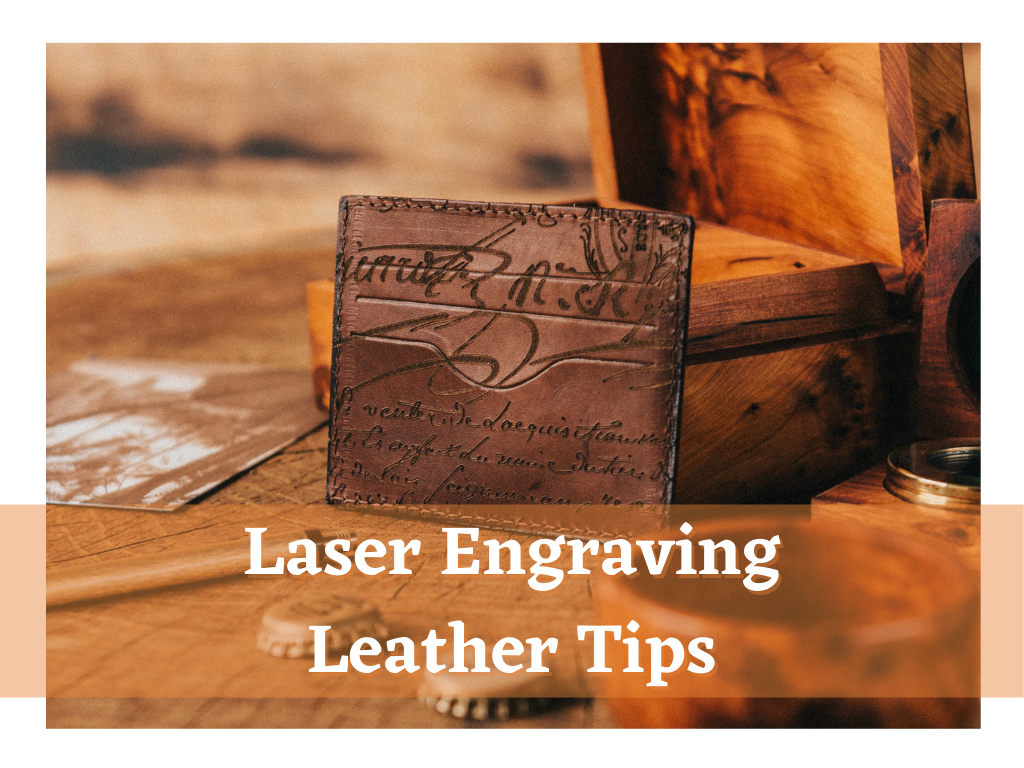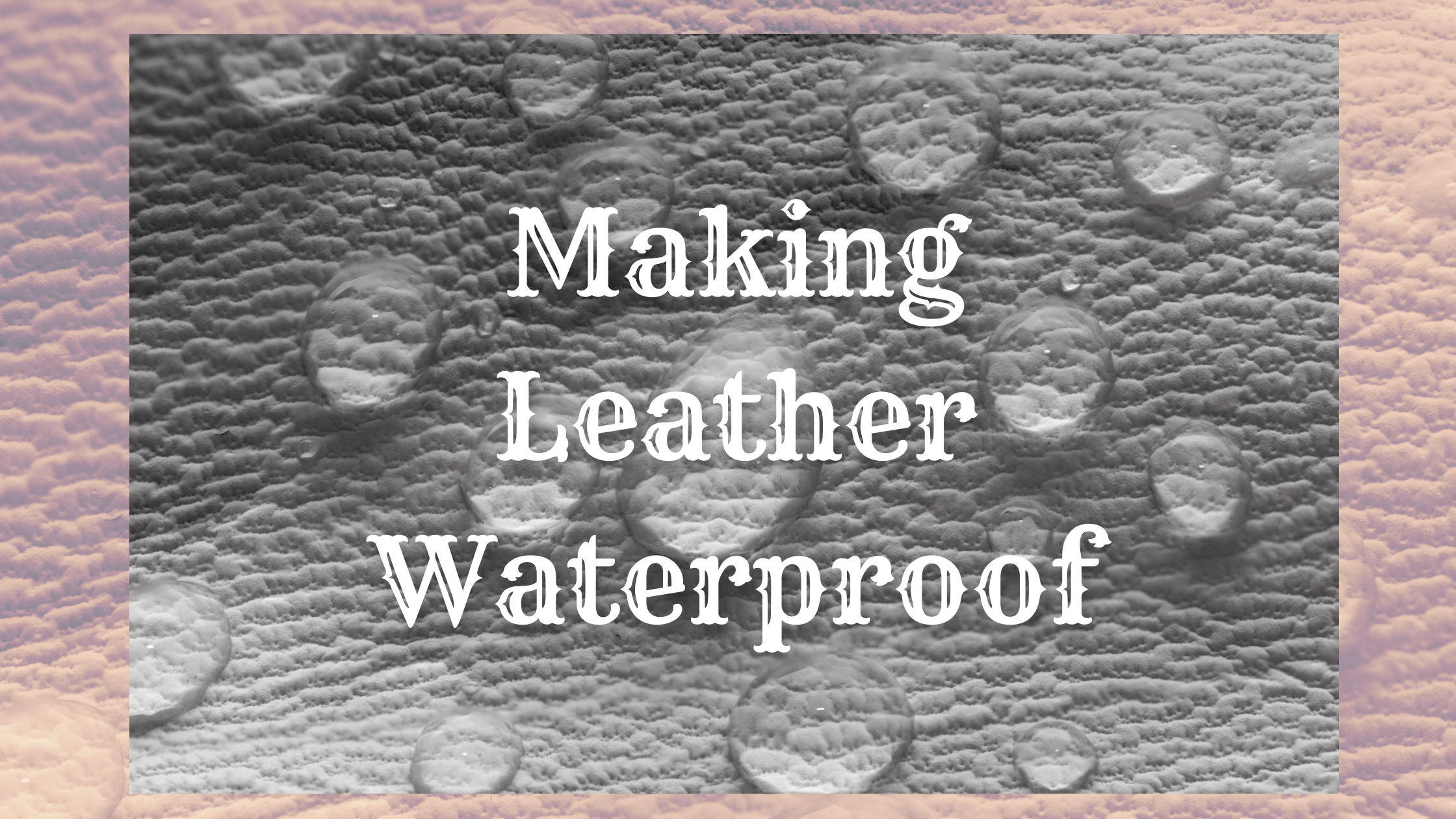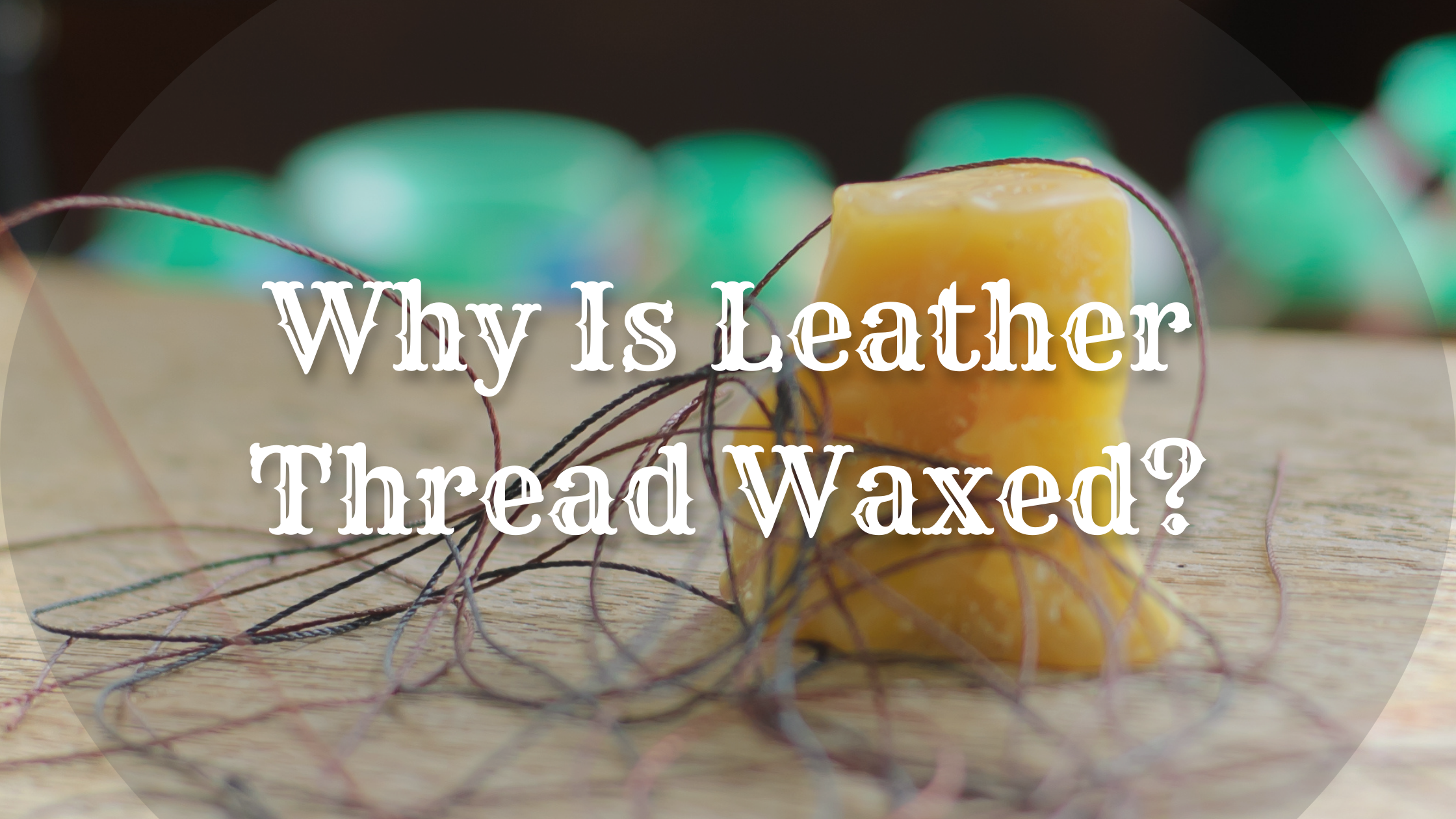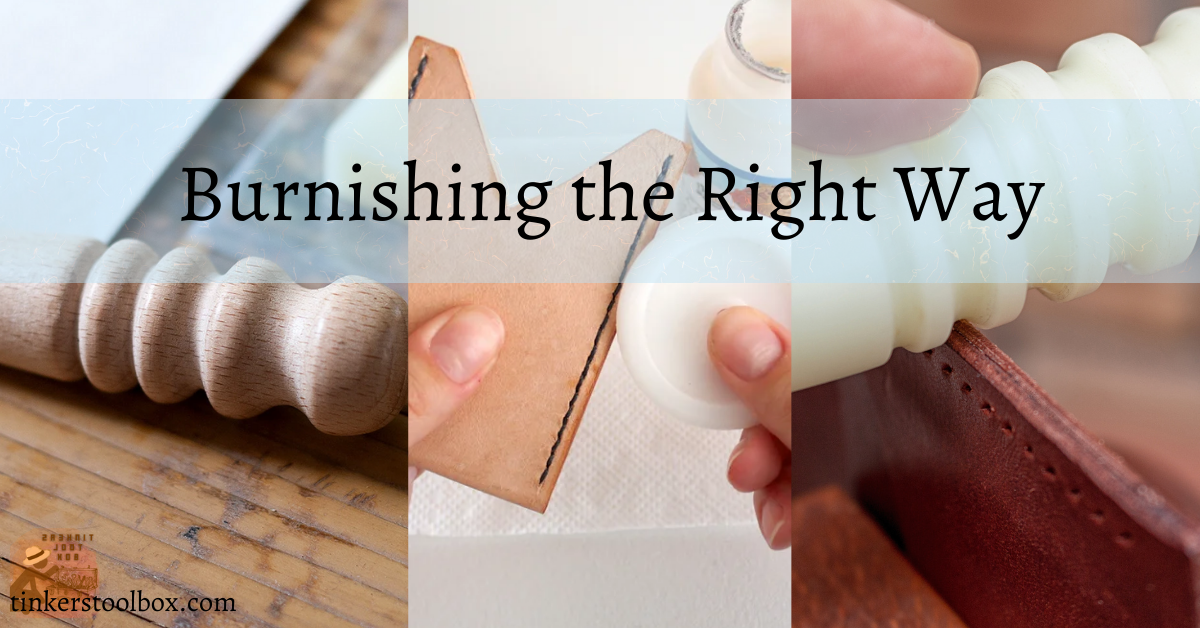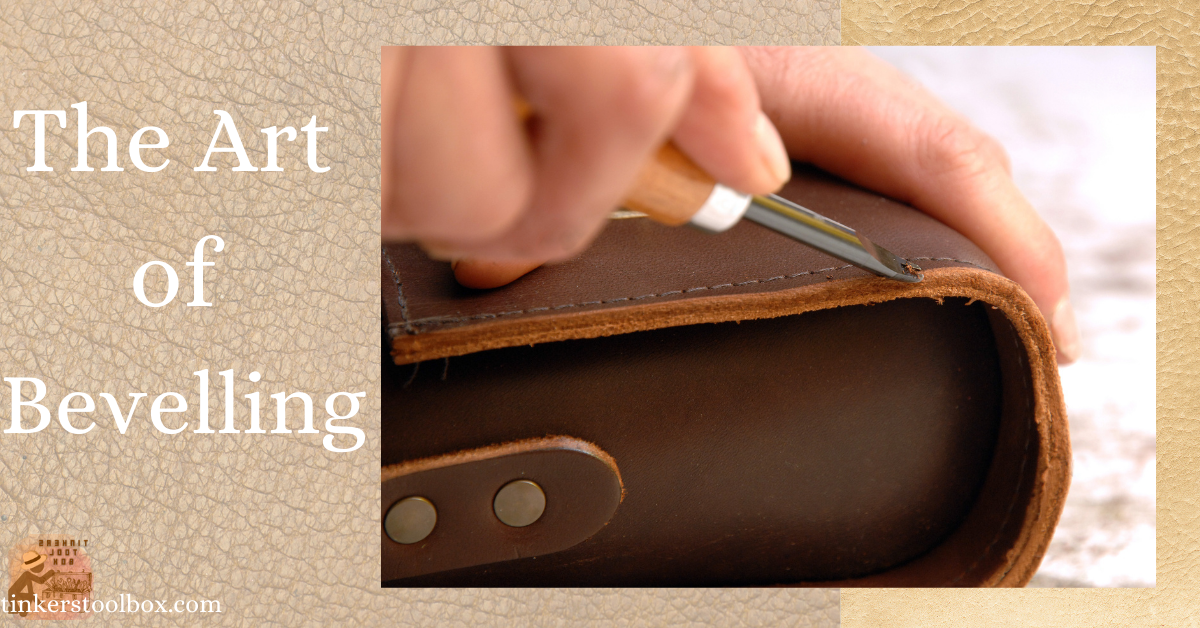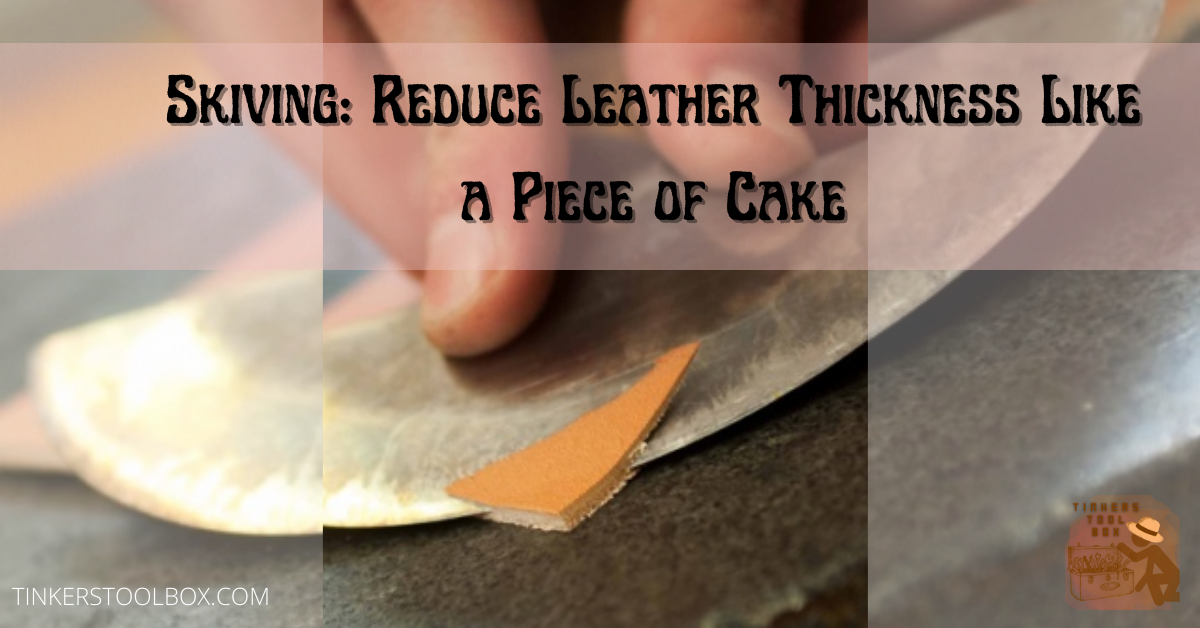Leather laser engraving is a leather tooling technique to show art, creativity, and other information on leather. Any aspiring leathercrafter can do leather engraving as long as you have the right tools and materials. Also, it would require your willingness, patience, and great effort, as it will hone your skills. The engraving itself has plenty of variations, the different techniques applied to add a fascinating look to the leather it has been engraved on, so doing this can be both fun and exciting.
You can laser engrave on all types of leather materials, and it can be great for business and unique presents for your loved ones. Many designs that come to mind can be possible in a leather engraving from text, pictures, and logos. I have been drawn to leather engraving because of its intricate details, which I find fascinating. If you are like me, who loves to make crafts out of scratch, you can also explore leather engraving at your own pace and workplace. This article will give you tips and tricks in leather engraving, which will surely be of help in your first steps towards this tooling technique.
The Basics of Laser Leather Engraving
Making such details is a fine work of art, and it would take a lot of time to develop specific skills needed to make such a beautiful masterpiece. Laser leather engraving is just one of the many to add sophistication to your leather.
Laser Engraving: A Glimpse On How It’s Done
Laser leather engraving is efficiently done using laser machines to avoid the warping and errors that can come by hand tools. This method is quick, as the material is removed with each pulse of the laser. The depth of the marks is controlled by the number of times the laser beam is passing on the fabric.
Laser engraving uses beams that are directed onto the leather piece. The laser operations burn the specific points of engraving. Usually, the letters and designs are prepared in an automated way before being engraved onto the intended material. Laser engravers also facilitate the fast decoration of the engraving output.
There are different types of laser engraving machines. The first ones are engraver machines where the workpiece stays stable; only the laser moves inversely. Other devices are dedicated to cylindrical workpieces.
The last possibilities are laser engraving machines where the laser and the workpiece are immobile, but galvo mirrors move the laser beam on the surface to engrave. The use of devices in engraving leather is a better method concerning high production. The technique uses machines and laser equipment technology to create various designs of engraving.
The engraving machines come in different sizes. The engravers have high versatility as they can engrave many types of materials. Some of these materials include glass, steel, plastic, brass, stone, iron, aluminum, crystal, wood, bamboo, and many other materials.
Despite the speedy output delivery, the machine-based engraving offers a cost-effective solution, especially for large engraving. Modern laser engravers operate at very high speeds, therefore, give faster results. The machines are convenient in operation, whereby perfect products with smooth edges also characterize them. High accuracy levels facilitate perfection as the lasers engrave the materials in uniform and set patterns. This method is quick, as the material is removed with each pulse of the laser. The depth of the marks is controlled by the number of times the laser beam is passing on the fabric.
The Perfect Reason To Apply Leather Engraving
Leather engraving, as mentioned, adds extra beauty and meaning to leather-based products. It is truly a work of art that gives us a glimpse of both the ancient and modern world. In the latter, we are currently facing the rapid evolution of human needs and human wants, and this would include the leather manufacturing industry, which also includes leather engraving.
We find it more significant, especially in the fashion industry, to make it seem more desirable and expensive.
The designs are chic, sophisticated, to elegant to have a more detailed and classier look.
Simple Projects You Can Apply Leather Engraving
You can use your laser engraver to come up with unique designs on all kinds of products. Here are just some simple projects you can start working on. You can begin with belts, bracelets, purses, and wallets. These offer a wide surface easy for beginners to engrave.
If you are already on the next stage of your leather engraving journey, you can start doing it on shoes and leather outfits that are wearable and can flaunt your creativity and skills. There are many projects you can do, which also depends on your engraving skills.
The Don’ts In Laser Leather Engraving
In doing laser leather engraving, there are simple must note that you should remember. It is crucial to remember these to help you produce a sound also depends on the output.
Never Engrave a Finished Leather
Never engrave in both manual and machine-finished leather. A finished leather with all the conditioner and chemicals added on it will produce the depends on the nastiest stench that can be harmful to your health. It will also char along the process. Always choose high-quality undyed and no-finish leather.
Do Not Overwet The Leather
Wetting the leather is essential to make the leather more pliable for engraving. This is a golden rule for leather engravers. You should wet the leather but make sure not to overdo it.
Just run in the faucet enough on the front and backside of the leather until it is wet enough to lay flat on the workspace. This will maintain the leather to stay still on the surface. If you engrave dry leather, you will get a char on your leather. It will appear burnt if you are not careful in engraving.
With the wetness of the leather, it can neutralize that char before forming in laser cutting.
Do Not Etch or Bevel the Leather If It’s Still Damp
Since you wet the leather before leather engraving, make sure to let it dry before etching or beveling for a polished look. You can sand it and burnish it.
The Golden Tips in Keeping Your Leather Clean
Like other leatherworking processes, it is essential to keep your leather clean not just for aesthetic purposes but also as a reflection of your working attitude in maintaining cleanliness which is very important.
Prevent Stained Edges With Masking
Before you start engraving, make sure that you’ve already masked the edges because engraving can stain the edges of the engraved part. To prevent this from happening, you must cover it with masking tape.
The masking tape will help protect the material from the smoke of the laser around the engraved area. The masking tape does not affect the power or quality of the laser much.
After doing so, you can just peel off the masking tape, and you’re ready for the next step.
Utilize Presets For A Certain Style
Using a preset is ideal for preventing you from deviating from the design you want to achieve. It can also help you save time in the future if you are planning to use it again. In the making of presets, you should have a configuration setting designed to help you achieve a certain style.
Once you’ve had one, save the preset. Saving the preset can help you in the future, especially if you still want the same style and cut.
Use Test Cuts Before The Actual Leather
Though having a preset for the materials, try to run a test cut before running the full job. It’s worse to find out if the material did not run all the way through. For sure, you would not want that to happen. Create a small square or circle of about ½’’ or ¼’’ thick and cut it out on some scrap material. See whether you need to decrease or increase the power before doing the final cut. Configure it after.
Not Just Any Software For Laser Engraving
Since you will do laser engraving in a machine, you will, of course, need mainly software. It is always important to check the compatibility of this software with your engraver.
Software Compatibility
When you buy a laser engraver, it comes with software that will be good for your money. However, this free software may be suitable for general engraving in the long run, but it can hinder your creative side since some features are not available in a free version other than a paid one, such as designs and fonts.
If you already have the software you use in your designs’ layout, you can choose to purchase an engraver that is compatible with your software. In this way, you will utilize your skills in that software without having trouble learning the new software.
Data and Connection Transfer
Check how the machine engraver connects to a computer. This will matter for the ease of configuration and transfer of designs from the software to the leather. Wired devices will somehow crowd your workspace, so if you prefer more free space in your working area, try out a machine that utilizes wireless technology.
Be Organized: Compiling Designs and Layers in One File
Since laser leather engraving is usually machine done, it is essential to organize your designs in one folder to maintain a smooth workflow. This will also minimize errors in engraving the incorrect design on the leather. Remember, it is hard to correct mistakes in laser engraving.
Organizing Your Workflow
It is ideal for printing one design at a time. The easiest way to do this is to put it in different layers in just one file. Most of the graphic programs will help you create these layers and allow you to turn them on or off, depending on your preference. And here are some of the advantages of layering:
In controlling the order of your cuts, the laser you’re using should have some options that will allow you to determine the order. The lines are cut, and one way of controlling it is to put different layers on. It turns the printer on and off in the order you preferred it to be.
It is also ideal to have multiple designs and parts in one file. Rather than having the files separately on each design, just put them in one file. However, you have to put them on individual layers. And print the layers one after the other. It will help you keep things as organized as possible.
You will need some guides for laying it out. To place an object in, you’ll need a target to place it in, but if you do not want them to print, then put them in their own set of layers. Then turn the printing of the layer off.
Use The Right Cutting Technique In Laser Engraving
Of course, it is essential to use appropriate techniques in leatherworking. These cuts will depend on your needs and the design you are going to make.
Vector Cut Vs. Raster Cutting: The Perfect Time For Each
The difference between the two is that the vector cut only traces the lines of the cut while raster engraving, the laser travels from left to right across the print area and moves downwards, and repeats the process until the image is engraved. This makes vector cuts a lot faster than raster engraving. Raster engraving usually takes longer than the vector cut.
However, the advantage of the raster engraving is that you can adjust the thickness depending on how you’ll be needing it on your design. However, it would still be longer to take for the raster engraving.
A vector cut can surely save you a lot of time, but it also has its disadvantages, such as not having thick lines, and you cannot adjust the thickness of its lines which would not give you a crispier result than that of the raster engraving.
The vector cut has a very tight focus. So what you’re going to do to get a thicker line is to lower your material. This will help you make your laser lose focus. When the laser loses focus, it will spread, out thus giving you a much thicker line.
First, there are two disadvantages of this: it will not be as crisp as it would in a raster laser and in using vector. The laser will pause on edge making dots more noticeable on the corners of the materials causing it to be burned a bit deeper.
Staying on Point By Hitting Your Engraving Target
It is essential always to make sure you hit your target on the leather. This will pertain to the desired leather area that you want to laser engrave. Doing this will make you reach your desired output promptly and, of course, with enough resources.
Hit The Right Target Accurately
You do not have to hit a target area of the laser’s origin because it will not help you determine the exact precision of the cut into the leftover space.
Measure the target area and get the dimensions you want. Just make sure that there would be enough space for the material you’re going to cut out. After having measured the target go to your file and use it as your guide to mark the target area. Then position the distance of the target area of the leather place in your design and cut it out.
Using Red Mark To Figure Out Which Area To Target
The laser you should be using should have the option to turn on a laser pointer that would project a red dot or mark where the engraving laser would run through. This is very helpful, especially in locating your target area before doing the final cut. But remember this only works on vector cut/laser. However, this is not as good as raster engraving, where the laser passes back and forth over the engraved area.
Engrave Multiple Objects The Right Way
Let us just say you have a lot of leather to engrave your design on. You could put them on one at a time on the origin of the laser and engrave them one by one. But it would be nice to lay out several of these at once and have them already laser engraved. The trick here is creating your grid to lay the pieces on and have the measurement accuracy and have the laser engraved on it.
Measure one of your items. It would be great if you get the exact shape you want. Make the shape you’ve chosen your precise target. Create the position of the design you’ve made and engrave it in the target.
Copy and paste your design as many as you can and fit it in the space of your laser bed. Leave a bit of space between your target so you can position them down without getting them bumped around the rest of the material.
Before printing, move your target to just one layer and your other design to create another layer, then turn off the printing to the layer with your design on it and direct flames, making the practice more welcoming than most leather engraving forms.
Leather engraving is a process used to either customize or create a decorative outlook on a leather-based product. The process involves designs that are permanently scored into the surface of the leather piece. This embossing or engraving is achieved using specialized tools, which either cut or stamp the design into the leather’s surface.
This type of process will achieve a result that is permanent, sturdy, classic, and beautiful. There are various methods for engraving on leather. These techniques include hand engraving, laser engraving, and even using multiple tools, resulting in the leather taking on numerous aspects depending on the method used to engrave the material.
Leather engraving is similar to embossing, where you’ll use many of the same tools starting with a sturdy work surface, cylinder tool, mallet, a bevel tool, stamp, and the leather you wish to engrave on.
Leather is a timeless, long-lasting material that has been a favorite choice for making various items through centuries. Its natural durability lends itself well to being handled on and engraved with many different designs and details. Leather engraving is an art that has been passed down from century to century, and nothing is more beautiful than its simplicity filled with intricate designs that can be etched into the leather’s surface. They can be something such as a classic emblem or a design with unique details.
When you purchase a leather product, whether it is for yourself or as a gift, customizing the item makes it uniquely yours and makes it all more special. For this reason, there are those companies that offer the buyer the choice of some form of customized items.
The Perfect Reason To Apply Leather Engraving
Leather engraving, as mentioned, adds extra beauty and meaning to leather-based products. It is truly a work of art that gives us a glimpse of both the ancient and modern world. In the latter, we are currently facing the rapid evolution of human needs and human wants, and this would include the leather manufacturing industry, which also includes leather engraving.
We find it more significant, especially in the fashion industry, to make it seem more desirable and more expensive. The designs are chic, sophisticated, to elegant to have a more detailed and classier look.
Simple Projects You Can Apply Leather Engraving
You can use your laser engraver to come up with unique designs on all kinds of products. Here are just some simple projects you can start working on. You can begin with belts, bracelets, purses, and wallets. These offer a wide surface easy for beginners to engrave.
If you are already on the next stage of your leather engraving journey, you can start doing it on shoes and leather outfits that are wearable and can flaunt your creativity and skills. There are many projects you can do, which also depends on your engraving skills.
Things to Consider In Stepping Into Laser Leather Engraving
Like other techniques used in leathercraft, there are certain things to consider before doing laser engraving. It is best to know these to maximize your resources and utilize the most out of this sophisticated technique.
Choosing the Right Leather For Laser Engraving
Laser engraving on natural leather, rough leather, and suede leather works so well. It works equally well when engraving and cutting leather or nubuck and suede leather, or other microfiber materials. Suede leather tends to stain but can be dealt with using coat sprays to add an extra layer of stain resistance. But sometimes, this side-effect might work in your favor.
Genuine leather is a natural material, but different types respond differently to laser processing. Therefore, it is challenging to decide on general rules for processing.
But as a rule of thumb, you have to reduce the laser power when you are working with genuine leather that is out of shape. There is no one-size-fits-all, so you might have to experiment with your machine until you find the form you want.
The Right Space and Size For Your Project
Since you will do laser engraving in a machine, you will, of course, need a workspace to place it in. Before buying a device, make sure to consider its size and where you are planning to put it.
You can get smaller ones at a reasonable price, and as the costs of machines go higher, they can perform more functions than the affordable ones. More advanced (expensive in most cases) engravers are heavier and bulkier, which should be considered if you have a little work area.
It Pays To Read The Manual
Any machines that you use will always have a manual or guide. Make sure to read this beforehand and regularly to be guided. It may be funny, but sometimes, simple troubleshooting can be found in the manual. So make sure to read and know the specs of your machine.
Looking At the Price
Laser engraving machines on leather can range from affordable to expensive, and each device has a feature that you should check. It can range from $500 to $10000. But do not worry because there are always decent options out there that will fit your budget and, most importantly, the comfort of operation you are looking for. Just have a general idea of what and how much you can spend.
Conclusion
Whether you’re just looking for information or want to take a more accessible way at leatherwork yourself, these are some of the essential leather engraving techniques that you should know about. These tips and techniques have unique advantages, disadvantages, and hazards you’ll need to be aware of when trying them out. Still, all can produce beautiful designs for different leather-based clothes, accessories, furniture, and many more. Try this out in your next laser engraving project, and indeed you will surely enjoy it.
